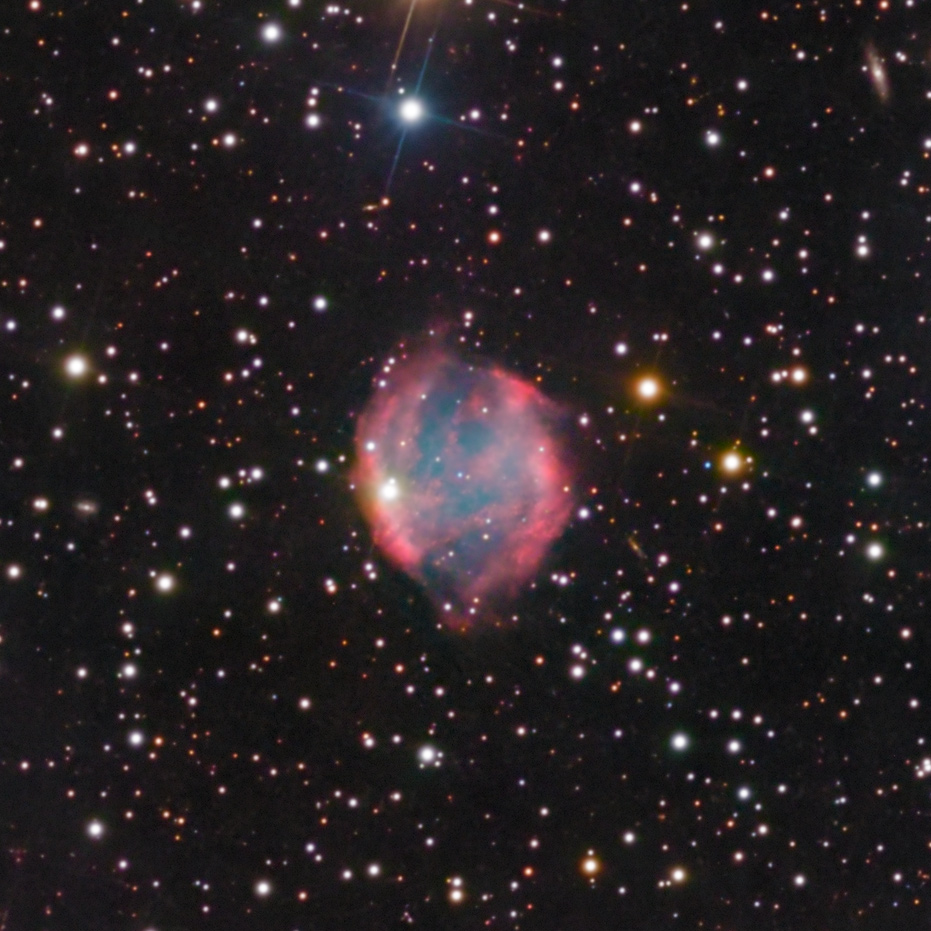Technical Information:
(HaL)(HaR)(OIIIG)(OIIIB): Ha:OIII:L:R:G:B--690:870:930:180:255:240 (a total of almost 53 hours of exposures); luminance layer consists of blend of 58
fifteen-minute images using a luminance filter, 20 three-minute images using a luminance filter, and 23 thirty-minute images using an Ha filter; R channel is a blend of 12 fifteen-minute
images through a red filter, the Ha data also used in the luminance layer; G consists of 17 fifteen-minute images taken through a green filter blended with 29 thirty-minute images taken
through an OIII filter, while B is the combination of 12 twenty-minute images taken through a blue filter blended with the OIII data.
Equipment: RC Optical Systems 14.5 inch Ritchey-Chrétien carbon fiber truss telescope, with ion-milled optics and RCOS field flattener, at about f/9, and an
SBIG STX-16803 with internal filter wheel (SBIG filter set), guided by an SBIG AO-X/STX Guider, all riding on a Bisque Paramount ME German Equatorial Mount.
Image Acquisition/Camera Control: Maxim DL, controlled with ACP Expert/Scheduler, working in concert with TheSky X.
Processing: All images calibrated (darks, bias and sky flats), aligned, and combined (using NormalizeScaleGradient) in Pixinsight. Color combine in Pixinsight.
Narrow-band data blended into the luminance and color layers in Pixinsight. Some finish work (GradientCorrection, background neutralization, color calibration, NoiseXTerminator,
BlurXTerminator, done in Pixinsight; some finish work (LRGB combination, saturation adjustment) was done in Photoshop CC.
Location: Data acquired remotely from Sierra Remote Observatories, Auberry, California, USA.
Date: Images taken on many nights during October and November of 2024. Image posted February 15, 2025.
Date: Image scale of full-resolution image: 0.56 arcseconds per pixel.
Seeing: Variable, with individual calibrated luminance images having FWHM varying from 1.9 to 3.2 arcseconds.
CCD Chip temperature: -25C
